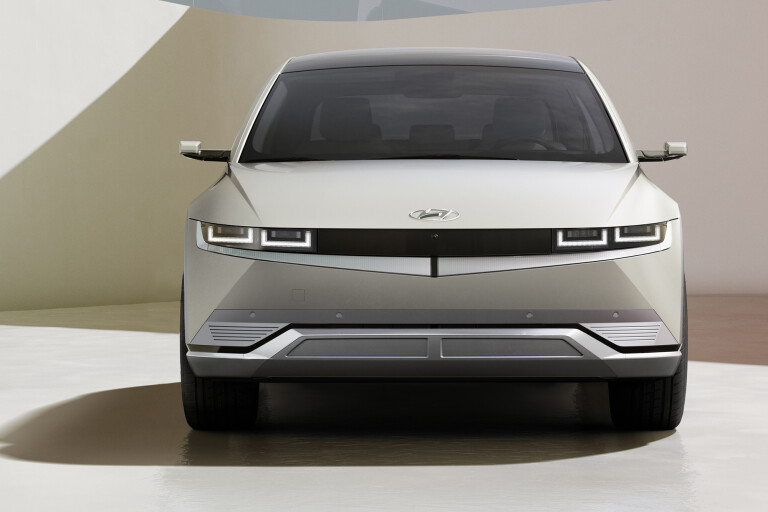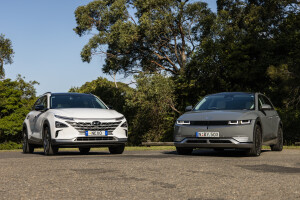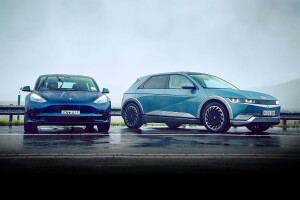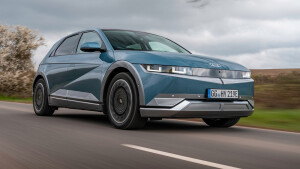Latest Review
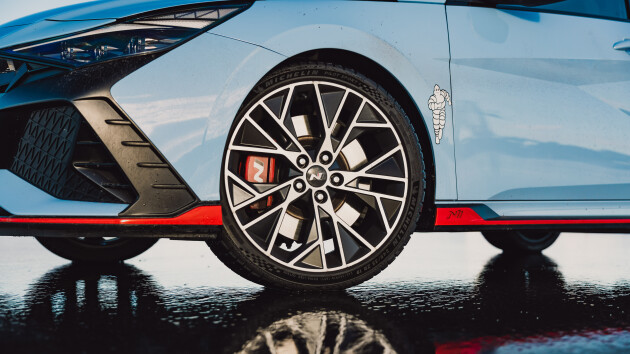
Tyre test: New Michelin Pilot Sport 5 review
New high-performance rubber from Michelin promises meaner, leaner, greener running. We take the fresh Pilot Sport 5 for a burn to see how they stack up
Michelin has released its new Pilot Sport 5 high-performance road tyre, six years after the arrival of the ‘4’ this newcomer effectively replaces.
That’s a somewhat shorter lifecycle than that of most vehicles it's likely to be fitted to and proof that the French tyre maker isn’t sitting on its hands, because the holistic improvement expected from one generation to the next isn’t unlike that of car manufacturing. And in some ways, it’s tougher.
It’s easy to forget, or to be ambivalent about, what goes into the evolution of a black rubber hoop. And what’s expected in the improvement dividends. Particularly given ever-increasing demands for higher fuel efficiency and better sustainability, be it cleaner manufacturing or end-of-life recycling. And that the new model ought to surpass its quite successful PS4 predecessor by all critical measures.
As unsexy a starting point for new hi-po tyres as it might seem, the new PS5 is manufactured from 40 per cent sustainable materials and, in use, produces 20 per cent fewer particulate emissions than the outgoing PS4. In fact, Michelin says 80 per cent of a tyre’s environmental impact is on road.
On one hand, the French manufacturer is pushing to use more bio-sourced and recycled materials for construction. On another, a main aim for the PS5 was longer wear characteristics as well as so-called “sustainable performance,” or more consistency in dry and wet grip from when the tyre is new to when it's due for replacement.
Amalgamating improved performance with longer-lasting wear is no easy feat.
In addition, ‘performance’ isn’t a simple concept. Critical measures for a road tyre, even a hi-po so-called ‘summer’ tyre, include dry and wet lateral grip, dry and wet braking, the tread’s associated water evacuation properties, comfort, noise, rolling resistance and, importantly for petrolhead consumption, how much dynamic precision they offer the driver. Be it hot or cold.
At the local launch, held at The Bend race circuit in South Australia, I asked Michelin what the key improvement is in PS5 over PS4, and where was the compromise in trade?
The response is, there are no compromises. The new tyre must match or better the old in every critical measure.
"[...]‘performance’ isn’t a simple concept."
That’s a tougher ask for an all-rounder its maker describes as “a road tyre you can use on track” compared with, say, the more focused if less multi-talented Cup 2, the maker’s “track tyre you can use on road”.
That said, Michelin describes PS5’s key highlights as high dry/wet grip, wear longevity and, interestingly, appearance, thanks to its Velvet Touch sidewalls that bring a “matte-black aesthetic”.
Interestingly, the existing Pilot Sport 4S, a harder-core more track-savvy evolution of the PS4, remains on the market, if in selective 19-to-22-inch sizes.
The PS5 now sat alongside it offers a broader-ranging fitment, from 17-to-21-inches, in 50 different tyre dimensions. On that, the local Pilot Sport line-up is bolstered by both SUV and EV lines in specs better suited to those vehicle types.
Without falling too far down the technical rabbit hole, the PS5 uses what its maker calls a Dual Sport Tread design trickled down from motorsport.
The inner portion of the tread (around 40 per cent) features large grooves and a high void ratio to do the heavy lifting during wet running.
The outer side of the tread face (around 60 per cent) features broader, more rigid blocks that cope better with heat build-up and are better suited for dry, promoting dynamic consistency and improved wear characteristics.
Belt construction is a hybrid of nylon and Aramid, or aromatic polyamide, a synthetic fibre used in aerospace and body armour. Branded as Max Touch, this construction is designed to ply the footprint more evenly to promote precision and response, without adverse heat build-up along the tyres’ shoulders.
Michelin Pilot Sport 5 on the track
A cold and wet snap has left The Bend Motorsport Park’s wonderful 7.8-kilometre circuit in a state not ideal for assessing the outright dry-running capabilities of the PS5, but the slightly damp and chilly conditions offer quite a clear snapshot of the newcomer’s real-world, all-rounder chops.
As an OE supplier to Hyundai, a pair of PS5-fitted i30 N Sedans – one for track, one for skidpan – are suitable and fitting test mules for the day’s red-misted activities.
First up, track. The course begins with a tight slalom, tackled in both directions at a velocity left largely to the driver’s discretion. The initial run is at a circumspect pace, the cold PS5s returning enough grip and front-end accuracy to encourage us to dial up considerably more velocity next go through.
Even thrashing away at the wheel too and fro, the Hyundai makes neat and brisk work of the sequence of safety cones.
Next up, full-ABS braking from 100km/h along the back straights. Here, the PS5s are perhaps more impressive than in the slalom, responding with rapid deacceleration and no secondary tyre-skipping chatter, stopping in damp as if the surface was dry. Nice.
What follows is a chance to attack some of the circuit’s more flowing corners at pace on a close return loop.
Here, the surface is mixed – half dry with a lot of damp patches – but rather than return inconsistent levels of friction, the PS5s maintain a solid constant purchase to the bitumen.
There’s enough lateral adhesion that it takes some foolhardy input to force either end of the i30 N to cry freedom. Keep it smooth and even with a decent head of steam the Michelins barely hint to breaking away.
Dive too deep into a corner, or lift off mid-corner aggressively, and whatever loss of lateral adhesion is met with polite and predictable sliding, with no sudden snapping or anything unruly. Push on and these are very predictable tyres at and beyond their limits.
Not much sustained punishment was involved so it’s unsurprising that, back in the pitlane, the tyres have barely any warmth to the touch, due mostly to the low-ambient and damp track temperatures. Which makes the amount of grip that the PS5s do ply in such conditions quite remarkable.
They really feel perfectly suited for anytime, anywhere backroad punting, such is the confidence-inspiring purchase they drill into the road surface in any direction.
However, given the situation on test, the jury is out on their outright dry capabilities and how much staying power can be sustained before grip succumbs to prolonged and excessive abuse.
Skidpan time!
A course is created on the skidpan mixing a slalom, a sustained radius sweeper and a braking ‘box’ erected using safety cones. And virtually all of it is submerged in water. We’re encouraged to attack it as hard as we like, with a timed shootout after a number of practice runs.
The amount of wet grip, some of it on virtually standing water, is truly impressive.
Bar diving into the sweeper section too hot to induce chronic understeer, it’s quite tricky to get the Hyundai properly out of shape.
Indeed, the i30 N is beautifully balanced on throttle-lifted oversteer, sitting neatly and obediently on its Michelins, clearly the quickest technique through the constant-radius turn.
VERDICT
In terms of feedback and connection, the PS5s are a class act. But how much they improve upon that of their forebears is tough to determine without back-to-back comparison. Indeed, it’d be very interesting to see how the new hoops fare in an on-track stoush with the PS4S still in Michelin’s line-up.
During our curated launch program, the PS5s demonstrated ample goodness and flashes of greatness, though it’d take stretching their legs longer and harder (and drier) to get a proper read on the broader talents available.
Whatever that outcome, it is pretty clear from a cursory taste test that Michelin has a damn fine mainstream high-performance tyre on its hands.
Things we like
- Excellent all-weather cold-running grip
- 20 percent lower particulate emissions reduction
- Promise of longer life expectancy over PS4
Not so much
- No hi-po S option yet
- Jury is out on dry track durability
- No 22-inch option (as offered in carryover PS4S)
News
-
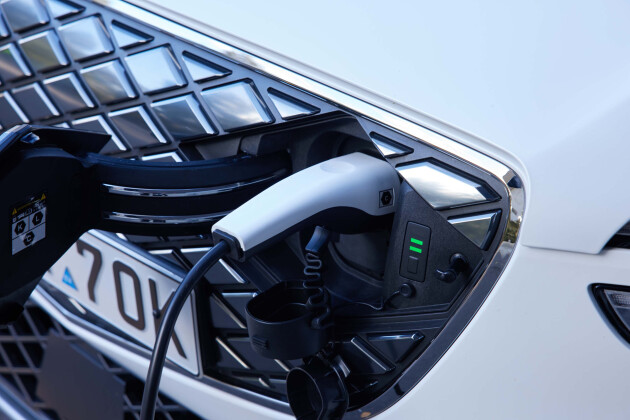 Advice
AdviceHere are the fastest-charging electric vehicles
Here’s the what’s-watt on electric vehicle battery capacity and charging times
-
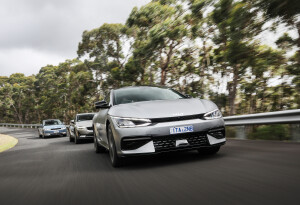 News
NewsWhich banks offer special loans for electric vehicles?
Bank Australia has announced it will no longer fund car loans for petrol or diesel cars from 2025
-
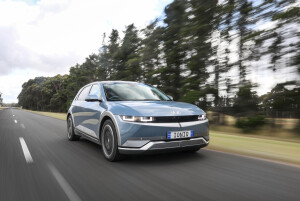 News
News2023 Hyundai Ioniq 5 EV pricing: Latest batch sold out, more coming
Hyundai’s mid-size electric SUV gains more range, power and battery capacity, and a new flagship grade, for 2023
-
 News
News2023 Hyundai Ioniq 5 N hits the road in wider new body
Electric foray joins Hyundai N family next year, confirmed for Australia in 2023
-

How much does it cost to charge an EV vs fuel a car in 2022?
-
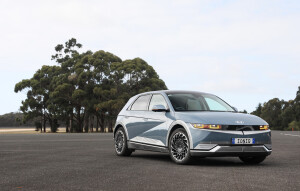
2022 Hyundai Ioniq 5 orders to reopen on August 10, 135 units available
-

Top tech coming to Ioniq first – no cheap electric models planned for lineup
-
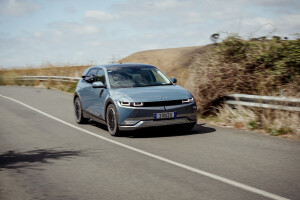
Hyundai Ioniq 5 supply to improve by end of 2022

